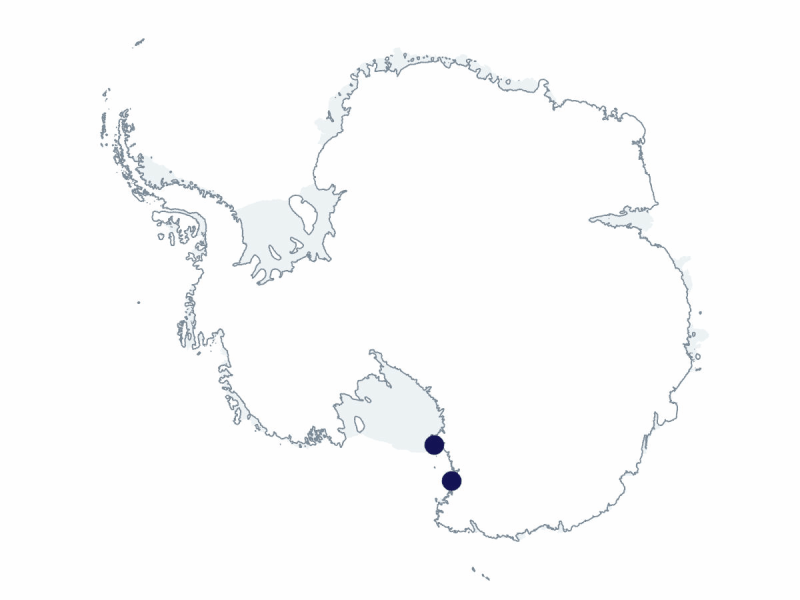2024-2025 USAP Field Season
Project Detail Project TitleUsing multiple stable isotopes to investigate middle to late Holocene ecological responses by Adélie penguins in the Ross Sea Summary
Event Number:
Program Director:
ASC POC/Implementer: Principal Investigator(s)
Dr. Steven D Emslie
Project Web Site: Location
Supporting Stations: McMurdo Station DescriptionThe Adélie penguin (Pygoscelis adeliae) is the most abundant penguin in Antarctica, though its populations are currently facing threats from climate change, loss of sea ice habitat, and food supplies. In the Ross Sea region, the cold, dry environment has allowed preservation of Adélie penguin bones, feathers, eggshell, and even mummified remains, at active and abandoned colonies that date from before the Last Glacial Maximum (>45,000 years ago) to the present. A warming period at 4,000 to 2,000 years ago, known as the penguin ‘optimum,' reduced sea ice extent allowing this species to access and breed along the Scott Coast in the southern Ross Sea. This coastline likely will be reoccupied in the future as marine conditions change with current warming trends. This project will investigate ecological responses in diet and foraging behavior of the Adélie penguin using well-preserved bones and other tissues that date before, during, and after the penguin ‘optimum.' A suite of three stable isotopes (carbon, nitrogen and sulfur) will be analyzed in these bones and feathers from active and abandoned colonies to assess ecological shifts through time. Using these three isotopes from collagen, ancient, and modern penguin colonies will be investigated in the southern, central and northern Ross Sea to determine changes in populations and foraging locations over millennia. Field Season OverviewIn 2024-25, a field team of three will deploy to McMurdo Station for three to four weeks. With helicopter day trips from McMurdo Station, they will collect ancient and modern Adélie penguin samples from the Marble Point region (including Marble Point to Dunlop Island), and Capes Barne, Crozier, and Royds, with two to three days of sampling per site. Following collections in the McMurdo region, with an international support agreement between the U.S. Antarctic Program (USAP) and the Italian National Antarctic Program (ENEA), the team will deploy to Mario Zucchelli Station via USAP fixed-wing aircraft. From Mario Zucchelli, researchers will use Italian helicopter support over two weeks to sample in the central Ross Sea area including Cape Irizar, Adélie Cove, Inexpressible Island and Edmonson Point. Researchers will then move back to McMurdo Station and redeploy to New Zealand by late January. Deploying Team Members
|
2024-2025 Science Planning Summary



For USAP Participants |
For The Public |
For Researchers and EducatorsContact UsU.S. National Science FoundationOffice of Polar Programs Geosciences Directorate 2415 Eisenhower Avenue, Suite W7100 Alexandria, VA 22314 Sign up for the NSF Office of Polar Programs newsletter and events. Feedback Form |



